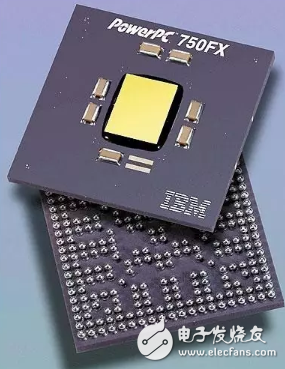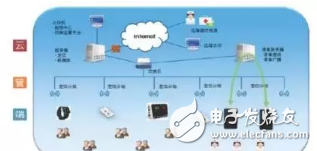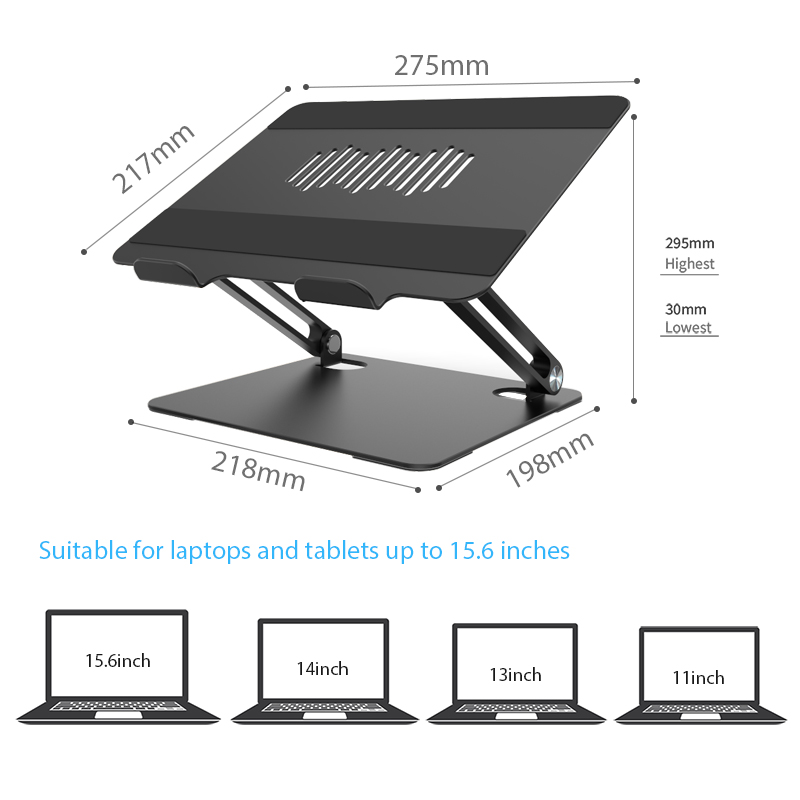Intel has taken advantage of Core and leveraged it to make Apple abandon PowerPC.
PowerPC was exceptionally powerful. It used to be the Xbox processor and the Mac processor. It occupied half of the server. When I first came into contact with the CPU, I knew that PowerPC was the first to make multiple cores. The first one was clocked at 4GHz. Single-core multi-threading (has not been mastered by AMD so far, AMD's single-module dual-threading is not as good as the shared core hyper-threading technology). . . . And IBM's factory has been able to provide advanced processes no less than Intel, theoretically no shortcomings? Why are the processors of the x86 instruction set now eroding PowerPC in the server market, eradicating the PC market, and the embedded and game consoles also use AMD series processors? I found that Apple gave up PowerPC after Core Core came out, and Intel's consistent style is to use the same core from Celeron to Core i7.

Applications in the professional field have been eroded by the personal consumer market: iPhone and android have prompted the rise of ARM.
The power of PowerPC is mainly for professional fields, such as telecommunications and automotive. The commonality of the development of professional market technology companies, almost every company doing professional market (or high-end market) in the case of continuous technological advancement will inevitably be marginalized by companies in the mass market.
INTEL is facing the mass market. After every generation, if the progress is obvious, the sales volume will increase greatly, otherwise the sales volume will be less obvious. IBM faces the professional market, the market reaction is not so obvious, and the machine will be replaced when the machine is replaced. After the first generation came out, it was done well, and the sales volume was almost the same. After a few times, the mental power of the technicians to move forward was almost gone, the company’s investment in technology will also be reduced, the old technicians will be lost, and the new technicians will not grow. Goal, work step by step. Intel believes in "Moore's Law" and maintains superior combat power in the highly competitive PC market. If you make minor modifications to the reliability and interface, you can migrate to the "professional field". The rise of ARM in personal consumer terminals has also brought such advantages.
After the mass market formed a monopoly, there was always a chaser, and it was overseen if it was not careful. After the monopoly of the professional market or the high-end market, even if there is no improvement, it is still on this one, and the surface is still beautiful. In fact, PowerPC has already fallen behind Intel's same specification server in terms of power consumption/performance ratio (know that google can save 5% of electricity) How much money, not to mention the difference is 50%.) However, because of a large number of dedicated software and peripherals, these devices are still updated after the choice of POWER PC, but some customers are reluctant to do more arbitrarily, and gradually replace, old customers leave, no new customers, as Manufacturers, if they have no need for technical input, or borrow more money from more aspects, they are more useful to the company.

Personal PCs are progressively powerful, with embedded applications in high-power embedded applications with X86. More serious is: the architecture of the end-pipe cloud, the cloud computing, cloud storage to the server (X86), terminal operations, presentation to the terminal (ARM: mobile Cortex-A series, wearable Cortex-M series)
The Android+ARM camp has greatly reduced the threshold for some companies to make mobile phones and other terminals: the rapid rise of manufacturers such as Xiaomi, Oppo and Huawei has benefited from this.
The tube (communication pipeline: gateway, switch, routing, etc.) should be an application scenario of a large-power RISC processor. PowerPC and MIPS originally occupied this field firmly, but with the strength of multi-core ARM, it gradually lost its advantage. The business model of ARM has played a major role in the ecosystem. In particular, this licensing model has enabled Huawei's device manufacturers with chip research and development capabilities to have the ability to self-develop CPUs, forming technical barriers and cost advantages, which has led to shrinking purchases by manufacturers like Freescale.
Although Huawei's K3V2 is being squandered by various methods, Huawei's current mobile phone software has gradually stabilized. In professional fields, such as optical communication, wireless communication, surveillance security, multi-core ARM servers, Huawei's Research chips are also internal and external, gradually eroding the market share of IT, Freescale and other manufacturers.
At this time, Intel got a strong support from the outside. Due to the gradual popularization of IBM PC compatible machines, Intel, which is relatively backward in technology, has taken up more market share. Although Motorola later introduced the 68030 corresponding to the Intel 80486, at this time, each workstation company began to develop its own RISC processor. It is difficult for Motorola to compete with Intel with only one Apple user. A few years later, Motorola simply joined the ranks of RISC to become a PowerPC. Ten years later, as Apple began to use Intel's processors, Motorola completely launched the microcomputer processor market.
Motorola has not lost in technology and capital. Before the 1980s, Motorola was significantly stronger than Intel in terms of capital and technology. For a long time, its processor is better than Intel's similar products in terms of performance. The defeat of Motorola, first of all, is the external factor of Microsoft, that is, Intel has Microsoft, the unsigned contractor. However, Motorola itself has many mistakes in business, management and market. If Motorola is doing its best, it should be able to hold the workstation and Apple market today by streamlining the processor of the instruction set.
To analyze the loss of Motorola, we might as well compare the two companies Intel and Motorola. First of all, this is a company of two different eras. Motorola, which is headquartered in central Illinois, is a high-tech company that also experienced the information revolution of the 1980s, but its attitude is entirely a traditional company in the 1950s and 1960s. Although Motorola treats employees well in terms of wages and benefits, companies and employees are basically traditional employment relationships. There are many internal management levels, and most employees basically do not have many stock options. Therefore, the company's performance has little to do with the interests of its employees. Intel Corporation is a typical Silicon Valley company. Each employee's work intensity is much larger than Motorola's, but each person has a much larger average stock option. Many of the better school district houses in Silicon Valley have been bought by early employees of Intel Corporation, and these houses cannot be afforded by their entire lives. A few years ago, the History Channel commented on the Sino-Japanese Sino-Japanese War. American historians believe that this is a war between two different eras of the army. Although the weapons of both sides are similar, there will be no suspense in the outcome of the war, because it is difficult for an army in the late era of authoritarian agriculture to win a rise. The army of the industrialized country. The same is true between Intel and Motorola.
Second, the level of command of the two companies is far apart. Intel's CEO in the 1980s and 1990s, although a scholar and a leader and manager of the computer era, was named the world's best CEO several times. Founded by the brothers of Galvin, Motorola was introduced to the son in the 1960s and to the grandson in the 1980s and 1990s. It is a typical family company. As the saying goes, it is not rich for three generations. This is true in the Calvin family. Three generations can be said to be a generation. Although the grandson's Christopher Calvin was "selected" as the CEO, if he is not surnamed Calvin, he will never be the CEO of Motorola, or even enter the top of the industry.
In business, semiconductors are just one part of Motorola, and the microcomputer processor is just a business of its semiconductor division, but it is all for Intel. Therefore, even if Motorola completely withdraws from the computer processor market, it will only lose some of its territory, and if Intel fails, it will face a disaster. In general, Wall Street always wants a listed company to have as many sources of income as possible rather than a single source of revenue. Motorola did do this. It used to be in computer processors, digital signal processors for communication, walkie-talkies, BP machines, Mobile phones and TV receivers have developed in many fields. As a result, every field is difficult to grow. Intel is very focused on doing things, and until today, it has been focusing on the processor of a personal computer. The research and development of each generation of products is concentrated on a large amount of manpower and funds, each time can only succeed and can not fail. It's like a loose thread and a rope, and a loose thread is easily broken by a rope. Therefore, the focused Intel finally made the computer processor business very large and very good, and the business diversified Motorola finally lost to Intel on the computer processor, met the Nokia on the mobile phone, and the signal processor ( DSP) was lost to Texas Instruments (TI). Many people ask me if Yahoo is likely to catch up with Google in the search field. I replied explicitly -- no, because Yahoo cannot focus on this field. Sometimes a good company can't do everything according to Wall Street's wishes.
If time can go backwards, let Motorola and Intel change at the time, that is, the IBM PC uses Motorola's processor, and the server manufacturer and Apple hand to Intel. After 20 years of development, it is difficult for Motorola to become the leader in the semiconductor field because its internal problems cannot be solved.
Computer Monitor Stand, the multi-point silicone support surface is more non-slip, and the multi-point soft silicone design prevents the computer from scratching while anti-slip. Laptop Stand Amazon is lightweight design, the weight of about 10kgs is equivalent to the weight of a large number of mobile phones, easy to store and go whenever you want.

Monitor Stand Riser,Metal Desk Monitor Stand Riser,Dual Monitor Riser Stand,Universal Monitor Stand Riser
Shenzhen ChengRong Technology Co.,Ltd. , https://www.dglaptopstandsupplier.com
